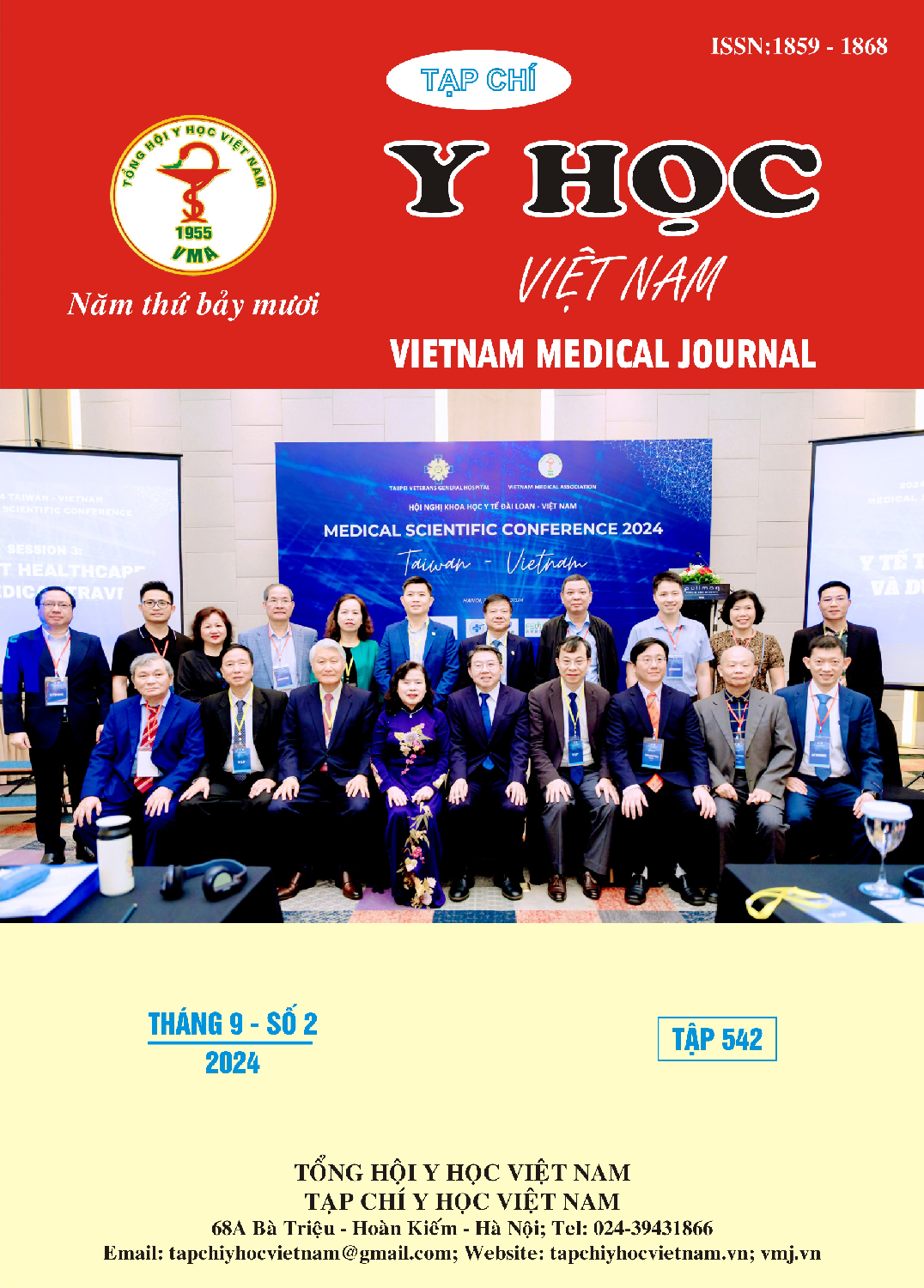CLINICAL CHARACTERISTICS AND RESULTS OF ENDOSCOPIC SURGERY TO CONTROL EPISTAXIS AT E HOSPITAL
Main Article Content
Abstract
Objective: Describe the clinical characteristics of patients with epistaxis. Evaluate the results of endoscopic surgery to stop nasal bleeding. Subjects: Patients were diagnosed with epistaxis and received endoscopic surgery to control epistaxis at E hospital. Research method: cross-sectional description. Results: Epistaxis are common in people over 60 years old and are more common in men than women, with a male/female ratio of 1.4/1. Mainly moderate epistaxis (53.6%) and anterior epistaxis (67.9%). Bleeding sites detected on endoscopic surgery: most frequently in the septum, followed by the inferior nasal meatus. Results of endoscopic surgery: 1 patient had recurrent bleeding, the postoperative complication rate was 4.8%. Conclusion: Endoscopic surgery to control epistaxis is a highly effective and safe treatment method.
Article Details
References
2. Quản Thành Nam, Đỗ Lan Hương (2022). Kết quả điều trị chảy máu mũi bằng phẫu thuật nội soi đông điện tại bệnh viện quân y 103. Journal of Military pharmaco-medicine, 47(7), 109-116.
3. Max Kallenbach, Andreas Dittberner, et al (2020). Hospitalization for epistaxis: a population-based healthcare research study in Thuringia, Germany. Eur Arch Otorhinolaryngol, 277(6), 1659–1666.
4. Yuji Ando, Jiro Limura, et al (2014). Risk factors for recurrent epistaxis: importance of initial treatment. Auris Nasus Larynx, 41(1):41-5.
5. Alper Yuksel, Hanifi Kurtaran, et al (2014). Epistaxis in geriatric patients. Turk J Med Sci, 44(1), 133-136.
6. Jing Zhang, Luhong Cao, et al (2017). Randomized controlled trial comparing Nd:YAG laser photocoagulation and bipolar electrocautery in the management of epistaxis. Lasers Med Sci, 32(7), 1587-1593.


